Failure ringworm is an infection that is accompanied by a cosmetic defect and various clinical symptoms.Pathological changes are related to the skin stratum layer and nail plate.The causative agent of Miccoses are representatives of the lower class - fungi.The infectious process is dangerous not only for the patient himself, but also for the loved ones around him.How to prevent nail ringworm and get rid of the infection will be discussed.
MELOSE OF NAILS IN THE LEGS - What is it?
The legs in the legs are called onicomycosis and refers to a special classification of diseases.Recently, complaints about the infection have grown several times.Doctors associate this indicator with harmful ecology.
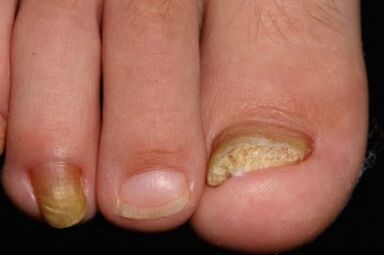
Onychomycosis is a disease in which the structure of the nail plate and the epidermal layer is disturbed.Surrounding tissues (skin roll) are involved in the pathological process.Nail is organized in such a way that cells are closely pressed against each other, forming a dense surface.Under the nail plate, the matrix and the blood vessels, surrounding the bone phalanx.The upper layer is represented by hyponichia and, at the base of the nail, there is eponichia.With nail ringworm, the pathogen affects the lower layers of the nail to the matrix.At the same time, divided cells destroy keratocytes and the nail plate is decreased and brittle.Onychomycosis, in the absence of treatment, is accompanied by various complications and is difficult to give in to modern therapy.
A little over 50 types of fungal infections that are dangerous to humans are known.They all have various morphological characteristics and parasitic stages.To finally identify the pathogen, a compulsory microscopic examination is performed.
The nails on the legs are necessary to protect the soft parts from the fingers against injury.Fashionistas paint nails in different colors, so ringworm is also considered a cosmetic defect.With onychomycosis, the appearance of the nail worsens.The nail plates burst, break and completely destroy.The disease causes an exacerbation of chronic systemic pathologies.
Having penetrated the nail layer, the causative agent begins to actively share, releasing new and new mycelium threads.Due to air deficiency, mycelium applies to healthy areas of nail and skin.The disease should be diagnosed and treated.
Disease types
Several types of pathogen are distinguished, affecting legs in the legs.Classify parasites according to morphological characteristics and clinical signs.
- Tricophite is red - a fungus that has branching and disputes on the mycelium wires.The location of the process falls into the epidermis, raw (keratinized) parts of the cells.A specific feature of red trichophyton damage is the rigor of tissues.Slot spots and stripes are disparate and then merge.In the thickness of skin cells, mycelium is compacted, stretched and dispute forms that can support methods of various treatment.By staining the nail drug in a microscope, the Tricofiton structure is clearly visible.
- The epidermophyte is the retail microorganism that causes nail ringworm in the skin peeling, itching in the inter -back space and stratification of the nail.Unlike Trichophyton, the epidermophyton grows in various directions of its spore cell so that the process location is blurred.Mycelium of various thicknesses: from delicate thin to wide and short.When studying a microscopic medicine, spores and part of mycelium are compared to flakes.Epidermophite infection is accompanied by a change in nail pigmentation and its gradual destruction.The infectious process begins both from the edge of the nail plate and its base.In addition to mooring patient nail plate, increased dryness and rapid keratinization are concerned.
- Mentagrofitest is one of Trichophyton's brilliant representatives.It is less common, it affects the skin of the feet, the nail rolls of the legs and the nail plate itself.The causative agent penetrates the lower layers and is able to reach the submarine epidermis - matrix.It causes a stratum of the stratum corneum of delicate parts of the nail.Statistics show that almost 20 % of fungal infection fits the trichophyton Mentagrofitest, 80 % is the red tricophyte.Mentagophyte onychomycosis contributes to the development of allergies, the formation of vesicles and bubbles of the affected epidermis.
- Tricophyte red is a stable microorganism for external factors, but more often affects the skin of the legs.The causative agent for a long time is on the patients' shoes and socks.In most cases, it is found together with other representatives of onychomycosis.
- Microorganisms of yeast are more famous as candidates.Candidiasis is found in nails, skin and mucous layers.With nail ringworm, candidates cause specific symptoms and varying degrees of kelercitis destruction.After conducting research, scientists have come to the conclusion that the candidate rarely becomes the leading cause of ringworm, however, in the scenario of a decrease in local immunity, the fungus is introduced into nail microtrauma and "dissolved" disputes.The fungus fungus is long, thin, branched.In a microscopic increase, are found in mycelium and many disputes.The onychomycosis caused by Candida is accompanied by the formation of wounds, a change in the shape and color of the nail.Candida's parapsyylosis is one of the types of candidiasis.A remarkable feature of the disease is the primary formation of a dark spot on the surface of the nail.In the future, the place increases - the nail becomes fragile and moves away from the matrix.
- Skopularopsis is a less common type of nail ringworm.Similar to candidiasis, but also has significant differences in morphology.Small black points appear on the surface of the nail plate.In the thickness of the nail, the formation is much wider and darker.Point spread leads to nail relaxation and destruction.
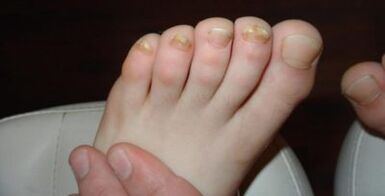
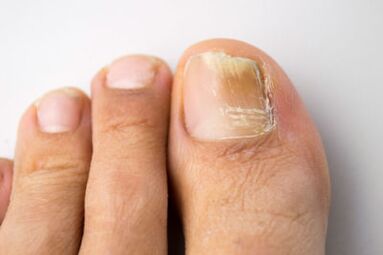
The characteristics of the pathogen species contribute to the correct diagnosis of the disease.However, to make a final diagnosis, it is not enough to know the clinical characteristics of the infection.For this, the pathogen must be differentiated.
Causes
The main reason for onychomycosis is the penetration of the fungus in keratocytes or epidermis.This process arises for the following reasons:
- a weakened immune system due to prolonged use of antibacterial drugs (general and local action);
- Direct contact with infection: ordinary household items, visiting pools or public saunas;
- The presence of chronic diseases of the endocrine system and thyroid gland;
- Systemic pathologies of extremity veins: thrombosis, atherosclerosis, varicose veins, trend to thrombophlebitis;
- Herpetic infection that contributes to the fall of body defenses;
- gastrointestinal diseases and muscle pathologies;
- Age -related changes.
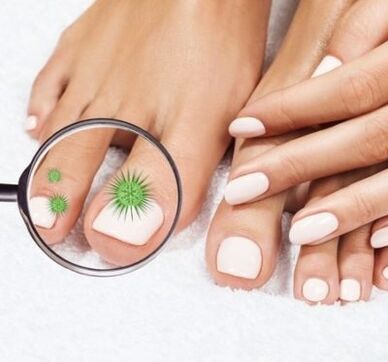
Nail ringworm can be the result of incorrectly selected shoes and underwear.
Pay attention!The use of synthetic quality socks leads to air deficiency, which creates "soil" for the propagation of mycoses.
Nearby shoes and shoes are not seasonally, the absence of leg hygiene and the use of common manicure tools usually leads to onicomycosis compared to chronic diseases.
Symptoms
You can suspect nail ringworm in the presence of signals such as:
- Small itching and burning.
- Skin peeling and redness of interdigital space.
- The tightening of the nail and the appearance on the surface of small points, cracks or rigor.
- An unpleasant odor and pain appear with the effort of the fingers (when running, walking or shoes).
The pathology develops rapidly and, after a shorter time, the patient is concerned about the fragility, relaxation and pigmentation of the plate.In the absence of treatment, a yellow-green or dark brown tone appears, roll hyperemia, burning the epidermis and the disappearance of nail shine.All of these signs indicate various degrees of nail damage.
The degree of damage to the legs in the legs
The fungus of nails on the legs is classified according to the degree of intensity of clinical signs.There are only three degrees of pathology:
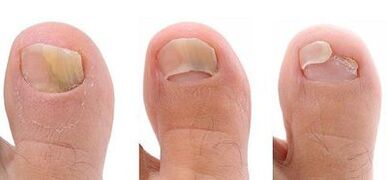
- Initial or normotrophic degree.The focus of the infection falls into the extreme fingers.The plate has a slight stratification or light pigmentation.
- The hypertrophic degree is characterized by the development of clinical signs.Patients observe pain, increased perspiration and the presence of unpleasant odor.The nail is compacted and colorful.
- The atrophic degree is the most dangerous form of pathology, since all layers of the nail and matrix are involved in the pathological process.Atrophic changes are captured by parts close to the skin and a roll.Due to significant destruction, the risk of bacterial infection and the development of purulent processes increase.Treatment processing can lead to sepsis or bacteria.
The type of disease is extremely important for a doctor as it allows to determine the method of treatment and avoid complications.
Diagnosis
Diagnoses or mycologists are involved in diagnoses as well as in the treatment of the disease.To confirm the diagnosis, special studies are carried out:
- Microscopic study of part of the nail or scraping;
- Sow the nutrient means for pathogen growth and therapy selection;
- Histological study of skin medicine to evaluate the degree of gravity.
The doctor performs an external examination, collects the patient's history and his complaints.If necessary, it recommends having a general blood test.
Diagnostic manipulations take some time, because part of the nail is placed in special solutions to dissolve cellular elements and study the pathogen morphology.It is impossible to make a diagnosis only by external signs, we can only assume a pathogenic pathogen.
After complete diagnosis and evaluation of the severity of the disease, the treatment method is determined.
Treatment of nail ringworm on the legs
Nail ringworm therapy on the legs depends on the patient's condition and the degree of nail plate destruction.The main objective of treating nail ringworm is the complete disposal of the patient of the pathogen and persistent relapse.Treatment tactics and therapy method are determined by the doctor.
Medicine

The most common treatment method is the use of medicines.The following groups of pharmaceutical products are used in therapy:
- Paulines are pills that destroy the parasite DNA and its mycelium.It is recommended to receive funds for at least 14 days.
- Azols are medications that inhibit the growth of pathogenic agents and prevent their reproduction.
- Allaminos are long drugs used at advanced stages.Due to the minimum against -indications, the medicines are successful.
The medicines above have various forms of dose: tablets, capsules, creams and sprays.Antifungal drug therapy is performed inside and out.The course of treatment is determined by the doctor.In addition to specific means, anti -support solutions are prescribed for washing, antibiotics and wound healing.Doctors gradually advise to get rid of the affected plate: cut or cut the edges, use a special patch.
Surgery
If conservative treatment did not give positive results, they resort to surgery.The intervention is performed using laser rays to suppress the growth of pathogenic microflora.The procedure is performed at various stages.
Traditional medicine
Non -traditional recipes are used to rinse wounds and increase local immunity.It is impossible to eliminate the fungus with folkloric methods, but it is possible to weaken the pathogen of ringworm.
- The most famous and ordinary method is bathing with tar soap.
- Famous baths with baking soda and salt - eliminate bacteria and exert antiseptic properties.
- Lemon juice and purpose.The nail is lubricated with juice and a compress is prepared from purposes.
- Celandine juice and vinegar diluted with water.
- Iodine lotions.
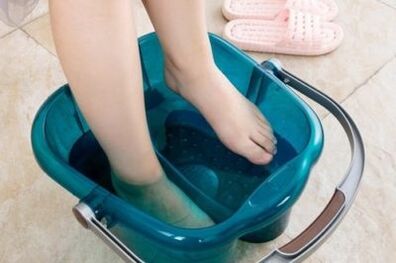
Folk methods are used together with drug treatment, however, to avoid complications, non -traditional physician treatment methods should be coordinated.
Prevention
Preventive measures can prevent infection and reduce the risk of relapse of the disease.The patient should eat properly, observe leg hygiene, do not put someone else's shoes or wear a common towel.When you visit saunas or pools, put personal rubber slippers and rinse them completely at home.
The ringworm of the leg nails is an unpleasant and dangerous disease.The infection can penetrate deeper layers and impress the nail plate and the matrix.It is easier to prevent the disease than to treat, but when infected, the patient should seek as soon as possible to get qualified help.Special creams, varnishes and compresses allow you to stop mycelium growth and destroy the cell wall.It is important to understand that the treatment is long, so you should expect the therapeutic effect not early than after 3 weeks.























